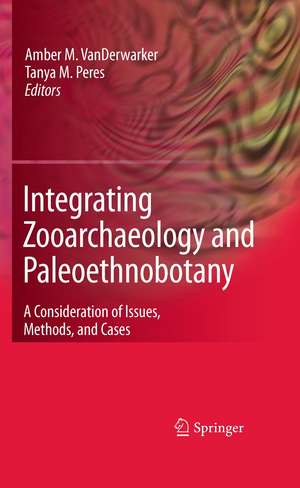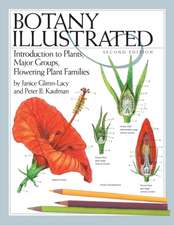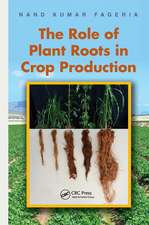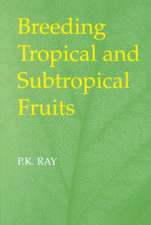Integrating Zooarchaeology and Paleoethnobotany: A Consideration of Issues, Methods, and Cases
Editat de Amber VanDerwarker, Tanya M. Peresen Limba Engleză Paperback – 13 dec 2014
Integrating Zooarchaeology and Paleoethnobotany takes the lead in tackling this important issue by addressing the methodological limitations of data integration, proposing new methods and innovative ways of using established methods, and highlighting case studies that successfully employ these methods to shed new light on ancient foodways. The volume challenges the perception that plant and animal foodways are distinct and contends that the separation of the analysis of archaeological plant and animal remains sets up a false dichotomy between these portions of the diet. In advocating qualitative and quantitative data integration, the volume establishes a clear set of methods for (1) determining the suitability of data integration in any particular case, and (2) carrying out an integrated qualitative or quantitative approach.
| Toate formatele și edițiile | Preț | Express |
|---|---|---|
| Paperback (1) | 391.02 lei 6-8 săpt. | |
| Springer – 13 dec 2014 | 391.02 lei 6-8 săpt. | |
| Hardback (1) | 398.53 lei 6-8 săpt. | |
| Springer – feb 2010 | 398.53 lei 6-8 săpt. |
Preț: 391.02 lei
Nou
Puncte Express: 587
Preț estimativ în valută:
74.82€ • 77.19$ • 62.44£
74.82€ • 77.19$ • 62.44£
Carte tipărită la comandă
Livrare economică 26 martie-09 aprilie
Preluare comenzi: 021 569.72.76
Specificații
ISBN-13: 9781489984753
ISBN-10: 1489984755
Pagini: 348
Ilustrații: X, 335 p.
Dimensiuni: 155 x 235 x 18 mm
Greutate: 0.49 kg
Ediția:2010
Editura: Springer
Colecția Springer
Locul publicării:New York, NY, United States
ISBN-10: 1489984755
Pagini: 348
Ilustrații: X, 335 p.
Dimensiuni: 155 x 235 x 18 mm
Greutate: 0.49 kg
Ediția:2010
Editura: Springer
Colecția Springer
Locul publicării:New York, NY, United States
Public țintă
ResearchCuprins
Issues and Methods for Integrating Data.- Methodological Issues in Zooarchaeology.- Methodological Issues in Paleoethnobotany: A consideration of Issues, Methods, and Cases.- Simple Measures for Integrating Plant and Animal Remains.- Correspondence Analysis and Principal Components Analysis as Methods for Integrating Archaeological Plant and Animal Remains.- Case Studies.- Microbotanical and Macrobotanical Evidence of Plant Use and the Transition to Agriculture in Panama.- Waitui Kei Vanua: Interpreting Sea- and Land-Based Foodways in Fiji.- Integrated Contextual Approaches to Understanding Past Activities Using Plant and Animal Remains from Kala Uyuni, Lake Titicaca, Bolivia.- A Tale of Two Shell Middens: The Natural versus the Cultural in “Obanian” Deposits at Carding Mill Bay, Oban, Western Scotland.- Documenting Subsistence Change During the Pleistocene/Holocene Transition: Investigations of Paleoethnobotanical and Zooarchaeological Data from Dust Cave, Alabama.- In the Light of the Crescent Moon: Reconstructing Environment and Diet from an Ottoman-Period Deposit in Sixteenth to Seventeenth Century Hungary.- The Farmed and the Hunted: Integrating Floral and Faunal Data from Tres Zapotes, Veracruz.
Textul de pe ultima copertă
In recent years, scholars have emphasized the need for more holistic subsistence analyses, and collaborative publications towards this endeavor have become more numerous in the literature. However, there are relatively few attempts to qualitatively integrate zooarchaeological (animal) and paleoethnobotanical (plant) data, and even fewer attempts to quantitatively integrate these two types of subsistence evidence. Given the vastly different methods used in recovering and quantifying these data, not to mention their different preservational histories, it is no wonder that so few have undertaken this problem.
Integrating Zooarchaeology and Paleoethnobotany takes the lead in tackling this important issue by addressing the methodological limitations of data integration, proposing new methods and innovative ways of using established methods, and highlighting case studies that successfully employ these methods to shed new light on ancient foodways. The volume challenges the perception that plant and animal foodways are distinct and contends that the separation of the analysis of archaeological plant and animal remains sets up a false dichotomy between these portions of the diet. In advocating qualitative and quantitative data integration, the volume establishes a clear set of methods for (1) determining the suitability of data integration in any particular case, and (2) carrying out an integrated qualitative or quantitative approach.
Integrating Zooarchaeology and Paleoethnobotany takes the lead in tackling this important issue by addressing the methodological limitations of data integration, proposing new methods and innovative ways of using established methods, and highlighting case studies that successfully employ these methods to shed new light on ancient foodways. The volume challenges the perception that plant and animal foodways are distinct and contends that the separation of the analysis of archaeological plant and animal remains sets up a false dichotomy between these portions of the diet. In advocating qualitative and quantitative data integration, the volume establishes a clear set of methods for (1) determining the suitability of data integration in any particular case, and (2) carrying out an integrated qualitative or quantitative approach.
Caracteristici
The first book to bring together archaeological plant and animal analysis Integrating different methodologies and issues from zooarchaeology and paleoethnobotany A collection of new voices in the field as well as established scholars Includes supplementary material: sn.pub/extras













